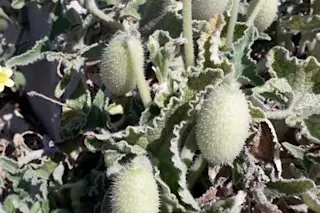The trout lily is a North American spring wildflower that's cuter than its name suggests. Dappled leaves frame a little yellow blossom that keeps its face shyly toward the ground. Inside the bloom, the flower's anthers and pollen vary from bright yellow to dark red. Researchers could find no purpose for the different colors—except, maybe, to satisfy the whims of pollinating insects. Plenty of flowers come in multiple petal colors, and other research has explored the reasons, write University of Ottawa biologist Emily Austen and her coauthors. Different petal hues may help a plant deter hungry grazers, attract pollinators, or survive in different environmental conditions. But there's been less research into why some flowers' sexual organs vary in color, Austen writes. The trout lily, Erythronium americanum, is a striking example. To explore why these flowers bother with multicolored pollen, the researchers started with a citizen science project. They asked people ...
This Flower May Make Multicolored Pollen Just to Please Bugs
Discover the intriguing trout lily pollen colors and how local pollinators show surprising preferences in this North American wildflower study.
More on Discover
Stay Curious
SubscribeTo The Magazine
Save up to 40% off the cover price when you subscribe to Discover magazine.
Subscribe












